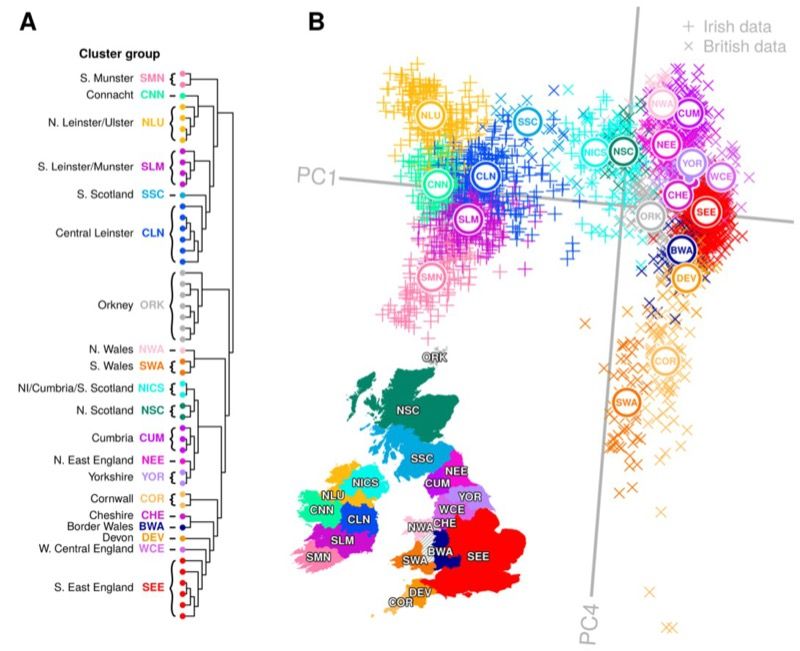Scientists reveal genetics of Ireland and Britain in high resolution
Posted on: 26 January 2018
Scientists from Trinity College Dublin have revealed a fine-grained picture of Irish and British ancestry via the genetic footprints left by migration into and between the islands. Their results show the genomic legacies of the Vikings, movement between peoples of Scotland and Ulster, and the role that geography and time has played in the genetic variation seen today.
By mapping genetic similarities and differences between almost 1,000 Irish individuals and over 6,000 from Britain and mainland Europe, the researchers identified 50 distinct genetic clusters within Ireland and Britain, representing groups of individuals with similar ancestries. These genetic clusters are closely tied to geography on the islands, along with differing influence from historical migrations.

Dr Russell McLaughlin, Ussher Assistant Professor in Genome Analysis at Trinity College Dublin, directed the research in collaboration with the Academic Unit of Neurology at Trinity, the Wellcome Trust Sanger Institute at Cambridge, and University College London.
Dr McLaughlin said: “We are interested in understanding how genes can influence our risk of developing certain conditions, but fine-scaled differences in ancestry can obscure our data. Understanding these ancestral differences helps us to zero in on genes that cause diseases.”
“The ancestral groupings that we see in Ireland correlate well with where people live, and using genetic information we can capture certain elements of the island’s past, which accord with the historical and archaeological record.”
This includes the Viking raids of Ireland, which the authors show has left a genomic footprint in modern Irish people.
Ross Byrne, a PhD student at the Smurfit Institute of Genetics at Trinity, is the lead author of the study. He said: “Previous research using Y-chromosome DNA showed little remaining signature of the Viking Ages in the DNA of Irish people. However, these older studies used less than 1% of the available genetic information and focused only on signals that could be read through the paternal line, which may not tell the entire story. By examining the remaining genetic information, we have shown that there is indeed a small but noticeable legacy of Viking influence in Ireland.”
The authors also examined Irish genetics in the context of Britain and found additional signals of migration between the two islands, including an enduring genetic impact of the Plantations and a long-standing close relationship between the peoples of Ulster and Scotland. When the authors projected their combined Irish and British data, they found a stark similarity between genetics and the underlying geography on the islands.
Dr McLaughlin added: “Genetic data alone can virtually redraw a map of Britain and Ireland.”
The study has just been published in leading journal PLOS Genetics. The article can be read here.
